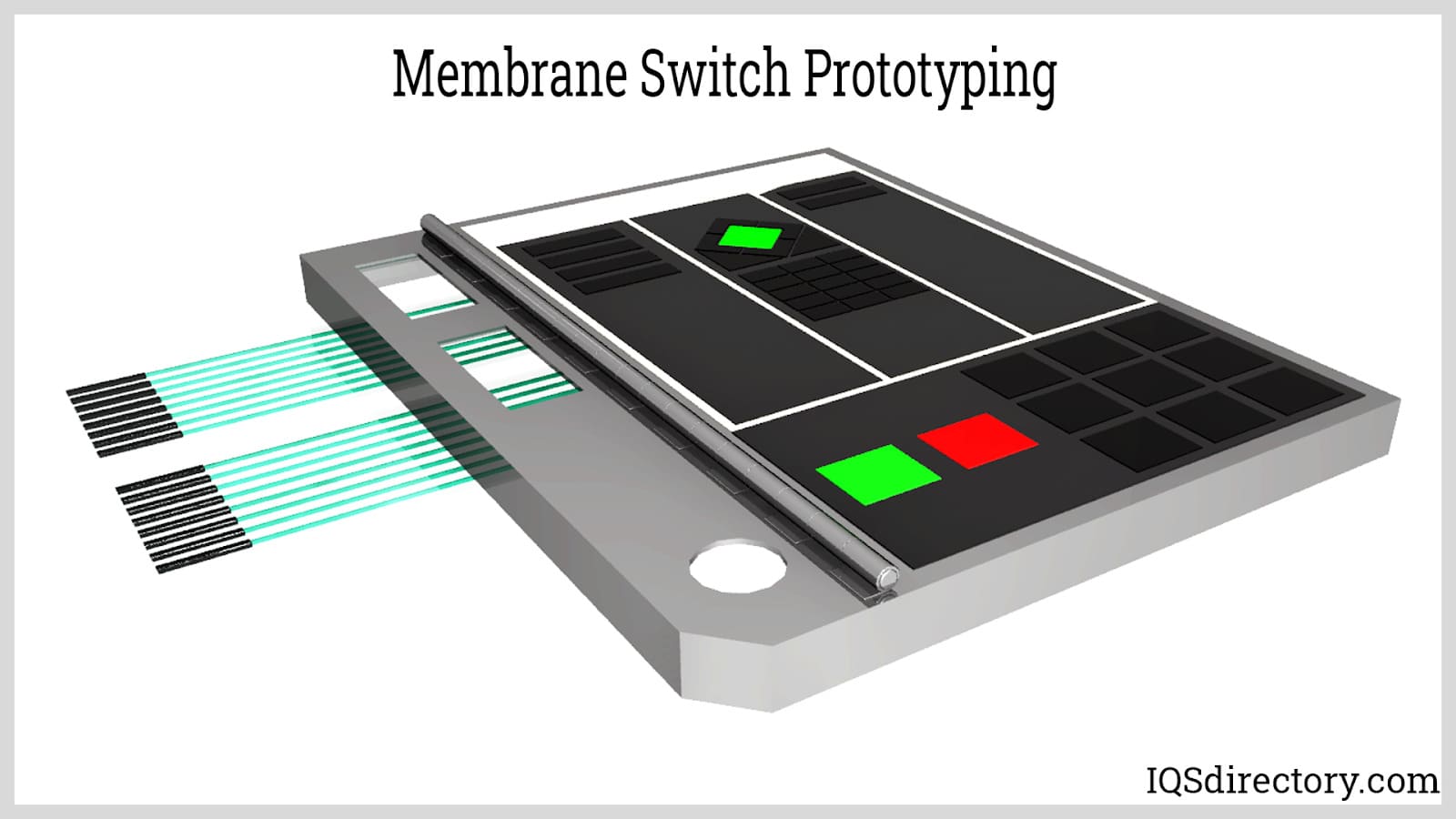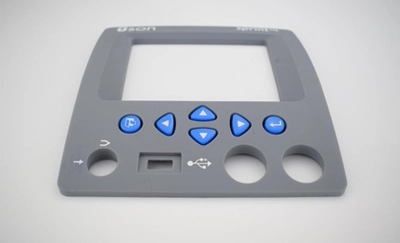Comprehending the Importance of Membrane Switch Over in Modern Electronics
Membrane switches are important elements in contemporary digital gadgets. They supply a blend of capability and style that boosts user communication. Their durable and light-weight nature makes them ideal for different applications. As sectors develop, the need for customization and advanced attributes expands. Comprehending just how membrane layer switches contribute to technology reveals their relevance in forming the future of electronics. What lies ahead for this innovation?
The Essentials of Membrane Layer Switch Technology
Typically overlooked, membrane layer switch technology plays a necessary duty in the modern-day electronic devices landscape. These tools, made up of numerous layers, function as user interfaces for various electronic items, varying from house devices to clinical tools. A normal membrane button consists of a graphic overlay, a spacer layer, and a circuit layer, which are meticulously assembled to create a functional interface.When stress is put on the overlay, the circuit layer is completed, enabling signals to be transferred to the gadget. This technology is known for its versatility, enabling modification in design, capability, and form to meet details customer requirements. Additionally, membrane layer switches are light-weight and thin, making them suitable for applications where space is a costs. Their longevity and resistance to ecological elements better improve their appeal, guaranteeing they can stand up to severe problems while preserving capability. Overall, membrane button technology is integral to creating reliable and user-friendly digital tools

Trick Benefits of Membrane Layer Switches
Membrane switches offer several crucial benefits that make them a recommended choice in various electronic applications. Their layout enables for a portable form factor, allowing makers to develop streamlined and light-weight tools. In addition, membrane layer buttons are immune to dirt, wetness, and chemicals, which improves their durability and longevity popular environments. The responsive responses provided by these buttons can boost customer experience, making them user-friendly and simple to operate.Furthermore, membrane layer switches can be customized with diverse graphics and colors, permitting unique branding opportunities. The production procedure is typically affordable, especially for high-volume manufacturing, as it lowers setting up time and simplifies layout. Ultimately, membrane switches call for very little maintenance, adding to lower overall functional costs. These advantages emphasize their growing appeal in modern-day electronics, where integrity and easy to use interfaces are important.

Applications Throughout Numerous Industries
The flexibility of membrane changes enables their extensive adoption throughout various sectors. In the clinical area, they are frequently used in analysis equipment and individual monitoring systems, supplying a resilient user interface resistant to pollutants. The automotive market makes use of membrane switches for control panel controls, enhancing individual experience with sleek layouts that endure rough conditions. In customer electronic devices, they function as control board for tools such as microwaves and coffee machine, providing a straightforward interface that is very easy to clean. The aerospace market utilizes membrane buttons in cabin controls, where reliability and space effectiveness are paramount. Furthermore, the industrial sector leverages these buttons in equipment and control systems to assure robust procedure sought after environments. This broad variety of applications emphasizes the flexibility of membrane switches, making them essential parts in enhancing functionality and user communication throughout diverse technological landscapes.
Customization and Layout Versatility

Future Patterns in Membrane Layer Switch Advancement
Arising patterns in membrane layer switch growth show a growing focus on improved functionality and assimilation with wise modern technologies. As customer demand for a lot more sophisticated digital devices boosts, makers are focusing on producing membrane changes that not click here to find out more only serve basic functional functions but additionally integrate features like touch level of sensitivity, backlighting, and haptic feedback.Furthermore, developments in materials are expected to improve sturdiness and ecological resistance, making membrane switches appropriate for varied applications in markets such as medical care, automotive, and consumer electronics. The assimilation of capacitive touch modern technology is most likely to come to be extra widespread, enabling sleeker styles and boosted user interfaces. membrane switch.Additionally, the surge of the Internet of Things (IoT) is prompting the development of membrane layer changes that can communicate wirelessly with various other devices, boosting interconnectivity. On the whole, the future of membrane button modern technology appears promising, driven by development and the pursuit of easy to use remedies
Frequently Asked Inquiries
Just How Do Membrane Layer Switches Contrast to Traditional Mechanical Switches?
Membrane switches, being extra space-efficient and offering a sleek layout, comparison with typical mechanical buttons that supply responsive comments. The former usually include adjustable graphics, while the last commonly guarantee longevity and dependability in different applications.
What Products Are Commonly Made Use Of in Membrane Change Production?
Membrane layer buttons are generally produced making use of products such as polyester, polycarbonate, and published conductive inks. These products supply responsiveness, resilience, and versatility, making them appropriate for different applications in electronic tools and individual interfaces.
Can Membrane Layer Changes Be Repaired or Recycled?
Membrane layer buttons can commonly be fixed, especially if small problems develop, such as glue failure or surface damage. However, total reuse is generally restricted because of wear and possible destruction of products with time.
Exactly How Do Environmental Factors Affect Membrane Layer Switch Performance?
Environmental variables, such as humidity, temperature level, and exposure to chemicals, greatly affect membrane switch performance. Severe problems can result in deterioration, impacting responsiveness and long life, ultimately compromising the performance of the gadget in numerous applications.
What Is the Regular Lifespan of a Membrane Layer Change?
The common lifespan of a membrane layer switch generally ranges from 1 to 5 million actuations, depending upon factors such as use regularity, ecological problems, and the materials made use of in production, impacting longevity and performance long life. A regular membrane layer switch is composed of a visuals overlay, a spacer layer, and a circuit layer, which are carefully constructed to produce a useful interface - membrane switch.When pressure is used to the overlay, the circuit layer is completed, allowing signals to be sent to the gadget. The tactile feedback provided by these buttons can improve customer experience, making them intuitive and very easy to operate.Furthermore, membrane switches can be personalized with diverse graphics and colors, enabling for special branding possibilities. As consumer demand for more sophisticated electronic devices rises, producers are concentrating on creating membrane switches over that not just serve basic operational roles however likewise integrate features like touch sensitivity, backlighting, and haptic feedback.Furthermore, advancements in materials are expected to boost longevity and ecological resistance, making membrane layer switches appropriate for varied applications in sectors such as health care, automotive, and consumer electronic devices. The integration of capacitive touch modern technology is most likely to come to be much more widespread, allowing for sleeker designs and enhanced customer interfaces.Additionally, the surge of the Web of Things (IoT) is triggering the advancement of membrane layer switches over that can connect wirelessly with various other devices, enhancing interconnectivity. Membrane layer buttons, being extra space-efficient and offering a sleek layout, contrast with typical mechanical switches that provide responsive feedback